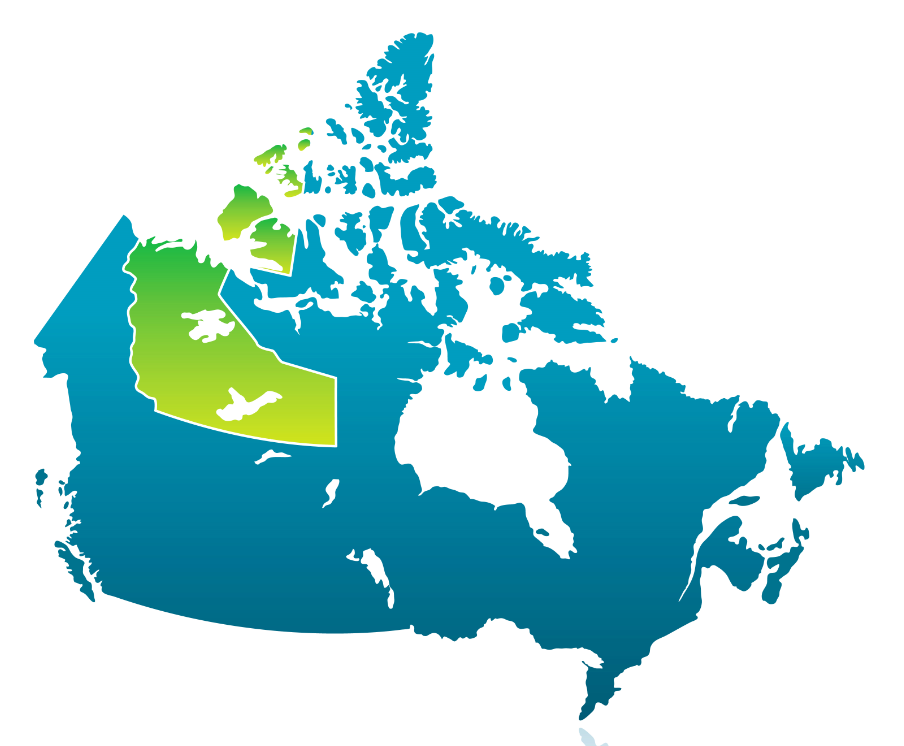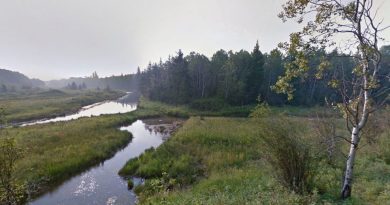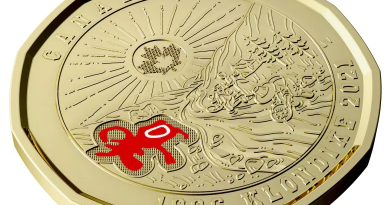Thawing permafrost in Canada’s Northwest Territories releasing acid that’s breaking down minerals: study

Mineral weathering likely increasing carbon dioxide released into the air and water, says study.
Rapidly thawing permafrost on the N.W.T.’s Peel Plateau is releasing acid that breaks down minerals and could be further contributing to Arctic climate change, according to new research from the University of Alberta.
The study, published in Geophysical Research Letters, found that as permafrost thaw accelerates, a process called mineral weathering intensifies. This happens when minerals that were previously frozen are exposed and broken down into their chemical components by sulphuric or carbonic acid that can exist naturally in water.
It has also likely increased the amount of carbon dioxide released into the air and water, the study says, which causes climate warming.
‘Like a giant mud pit’
Lead author Scott Zolkos, who is a PhD candidate in the university’s Department of Biological Sciences, said the Peel Plateau is an ideal place to study this phenomenon. During the last glacial cycle, he explained, as the ice sheet moved it ground up bedrock and then preserved minerals.
“It’s an exciting place for this type of work because the permafrost there is more mineral and sediment rich,” he said.
Zolkos said the researchers also worked with scientists from the N.W.T. Geological Survey to look at long-term records of the Peel River. The records showed that sulphuric-driven mineral weathering has intensified as permafrost thaw has accelerated.
He noted that permafrost thaw slumps in the Peel Plateau are “impressive” and said the largest one he saw was several hundred metres across and more than 30 metres deep.
“They’re really pretty massive features and inside them there can be quite a lot of activity because the ground subsides … and the permafrost becomes exposed,” he said, explaining that rainfall can increase this movement.
“It looks like a giant mud pit.”
Impacting local ecosystem
Zolkos said researchers also spent four years in the field and worked alongside local residents who helped guide them and collect samples.
“Just hearing their perspectives on how that region has changed over the past five decades or more, it’s very interesting to hear,” he said. “It also gives us a really deep appreciation for a lot of ecological change that we haven’t seen in only the past few years that we’ve been here.”
Zolkos said mineral weathering impacts the ecosystem, which has both local and global impacts.
“As permafrost thaws and this material that’s been kind of locked away in the permafrost for so long enters streams, it can transform and change the chemical composition of streams”, he said.
The growing research in this area shows the need to reduce the amount of carbon dioxide in the atmosphere, Zolkos said.
“Once these thaw slump features start, it’s not really something you can stop, which I think is true of a lot of permafrost thaw in the Arctic.”
Zolkos said he hopes to look at the larger picture of the effects of permafrost thaw slumps on carbon dioxide in streams and how minerals move through streams.
Related links from around the North:
Canada: Climate-driven Arctic permafrost thaw will dramatically alter northern landscapes: study, Eye on the Arctic
Greenland: Greenland joins push to ban heavy fuel oil in the Arctic, Radio-Canada International
Finland: Finnish researcher’s animation shows climate warming at startling speed, Yle News
Norway: Climate researchers are building on 90 cm higher ground, prepare for the worst in Norway, The Independent Barents Observer
Russia: Buildings in Arctic Russia could collapse within decades says study, The Independent Barents Observer
Sweden: Too young to vote, Swedish student goes on strike for climate action, Radio Sweden
United States: Permafrost thaw prompts emergency orders from Alaska regulators over pipelines concerns, Alaska Dispatch News




Am I the only one that noticed the area is ground zero for oil & mineral exploitation in Canada’s Arctic?”
No, you are not. Why do you think USA is told climate change is NOT real? So, so sad that once again money Trumps all!!!!!